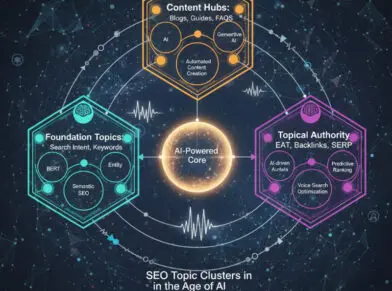WHY PRINT ADVERTISING VS DIGITAL MARKETING IS A MISTAKE

Year after year consumers spend increasingly fewer hours away from their devices. They work, shop and engage socially in online platforms, consuming digital media at a feverish pace. In one year, from 2015 to 2016, the number of hours Americans spent in front of a screen rose about 90 minutes. That average now tops about 11 hours of daily screen time.
Given our demand for digital, it does make sense to invest many ad dollars online, but writing off all non-digital media is a big mistake.
Think paper content is obsolete? We have news for you.
As we’ll see, multi-channel marketing strategies that utilize both can tap into the benefits of traditional print and paper advertising while leveraging the omnipresence of those online.
Multi-Channel Marketing Defined
Let’s start by laying the groundwork for what a well-rounded marketing strategy might look like.
Simply put, it’s a plan that uses on and offline avenues to get your brand in front of as many potential customers as possible. One strategy; multiple platforms. Dedicating yourself exclusively to digital marketing tactics may yield results initially, but utilizing analog channels like direct mail or print ads has the potential to target leads over the long-term.
Another way to frame it: multi-channel marketing makes your product or service available on the platforms your customers frequent, making it easy for them to make purchases when and where they want.
Deconstructing Digital Marketing
Don’t get us wrong. We are huge proponents of online advertising. It’s measurable, it’s malleable and it’s effective. Digital ads can be specifically targeted to your audience and changed as the data demands.
However, it’s important to remember that just because something’s more trackable doesn’t mean other avenues don’t have value in building and solidifying your brand.
Depending on the type of campaign you want to run, digital may fall short. For example, one study at San Jose State University found customers are more likely to browse your ad, scanning for keywords before quickly moving on. They’re consumed and processed more quickly. If your goal is to disseminate important and concrete product information, this selective reading and spotty attention span associated with some digital media could inhibit your sale.
The point is, the instantaneous access provided by an Instagram ad or Google PPC campaign is a powerful tool, and really, the benefits of a well-planned digital marketing strategy cannot be overstated. Still, they’re not always the best, and certainly not the only, way to play.
Investigating Print Ads
This brings us to the paper-based content that forms more traditional advertisements. Generally speaking, it requires less brainpower to process and is more memorable than digital media. Because it’s tangible, the brain tends to categorize physical material differently. Memories are created with more context–where you were, how it felt to hold it–offering a more sensory and emotional experience of the advertisement.
One 2009 study conducted by Bangor University and branding agency Millward Brown found that print ads and paper content increased the brain’s connection to internal feelings, implying that customers were more likely to “internalize” the ad.
Another study conducted for the U.S. Post Office found:
- Viewers engaged with paper ads for extended periods of time.
- Respondents were able to recall more information from the ad (including company name) more than a week after they first viewed it.
- The centers of the brain that are responsible for regulating value and desire were highly active when viewing physical ads.
Essentially, it’s like the difference between receiving an email or Facebook message on your birthday, and getting a hand-written card in the mail. Both are special, but one stands out more than the other.
Planning Consumer Oriented Content
Without question, when planning your outreach efforts, go where the consumer is. This may vary based on your market.
If they have a preferred channel, you need to be on it. This may mean reaching out more than once so you catch them at the right time, in the right place and with the right message.
Make sure you’ve researched your target audience thoroughly to find out where they dwell both online and off. Create customer surveys to collect data. Use buyer personas in-house. Rely on A/B testing to measure the effectiveness of your digital marketing collateral.
You may find some products like luxury items or brands with unique services lend themselves better for print materials. Others with less emotional motivation or merchandise with more SKUs than visuals might be more effective for online channels.
A Message to Marketers
We live in a digital world, but that doesn’t mean the world is entirely digital. Your advertisements shouldn’t be either. Print ads still hold power. When paired with the right online marketing initiatives, they’re likely to drive digital sales. Mix up your media to broaden and bolster your brand experience.
Need a little help? Let’s strategize together.


















